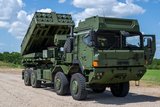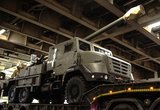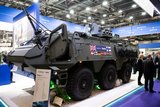Lockheed Martin wins $7m contract to produce laser enhanced sniper systems
Lockheed Martin was awarded a $6.9 million contract by the Defense Advanced Research Projects Agency (DARPA) for multiple One Shot laser-based sniper systems that improve accuracy and reduce the possibility of detection.
Existing sniper scopes cannot measure wind at long distances. One Shot utilizes a laser and camera to gauge wind speed and direction within 1500 meters, while employing sensors to account for atmospheric conditions and direct-view optics for enhanced night vision capability. This combination enables snipers to identify targets more accurately whether in day or night situations.
"One Shot provides the warfighter with a distinct advantage," said Dan Schultz, vice president for Lockheed Martin's Ship and Aviation Systems business. "Our ability to monitor wind conditions in real time is unmatched. One Shot increases the probability of hitting the target with the first round."
In 2008, DARPA awarded Lockheed Martin an 18-month $9.7 million contract to develop the One Shot system prototype. During tactical field tests in December 2009, snipers successfully engaged targets twice as quickly and increased their probability of a first-round hit by a factor of two to four, depending on the distance to the target.
The One Shot sniper system consists of a lightweight, stand alone spotting scope and an attachment that projects the precise point of impact into the rifle scope. The systems developed under the new contract will be used for testing with DARPA and the US military services.
Lockheed Martin is also focused on increasing the lethality of several other systems. In May, DARPA awarded Lockheed Martin a $3.9 million contract to develop a rifle scope attachment to enhance soldiers' marksmanship. The Dynamic Image Gunsight Optic, or DInGO, is a rifle scope attachment that uses recent advancements in digital imagers and displays to accurately view targets at varying distances without changing scopes or suffering a decrease in optical resolution. It also will account for bullet drop and local wind conditions.
The Army's Aviation Applied Technology Directorate also recently awarded Lockheed Martin a contract to incorporate One Shot technology into the Autonomous Rotorcraft Sniper System, which features a powerful rifle fitted into a highly stabilized turret mounted on board an unmanned helicopter or tower. Lockheed Martin plans to demonstrate a significant increase in the probability of hit with this system in the upcoming months.
Source: Lockheed Martin
More from Land Warfare
-
![Lithuanian 1st Division to achieve initial operating capability in 2026]()
Lithuanian 1st Division to achieve initial operating capability in 2026
Lithuania is one of the countries stepping up its defences in the face of the war in Ukraine with a particular focus on its neighbour and Russian ally Belarus, which has been making incursions into Lithuania’s airspace with balloons and drones.
-
Medium knocked out of British Army LMP, with CAVS as heavyweight champion
As the British Army seeks to modernise and consolidate its diverse vehicle fleet, yet another change in direction is underway.
-
![Energy evolution: How laser defence systems are powering the next phase of air defence (podcast)]()
Energy evolution: How laser defence systems are powering the next phase of air defence (podcast)
Laser-based air defence is moving from promise to deployment as global threats evolve. In this special podcast, we explore how high-energy laser systems are reshaping interception strategies.
























